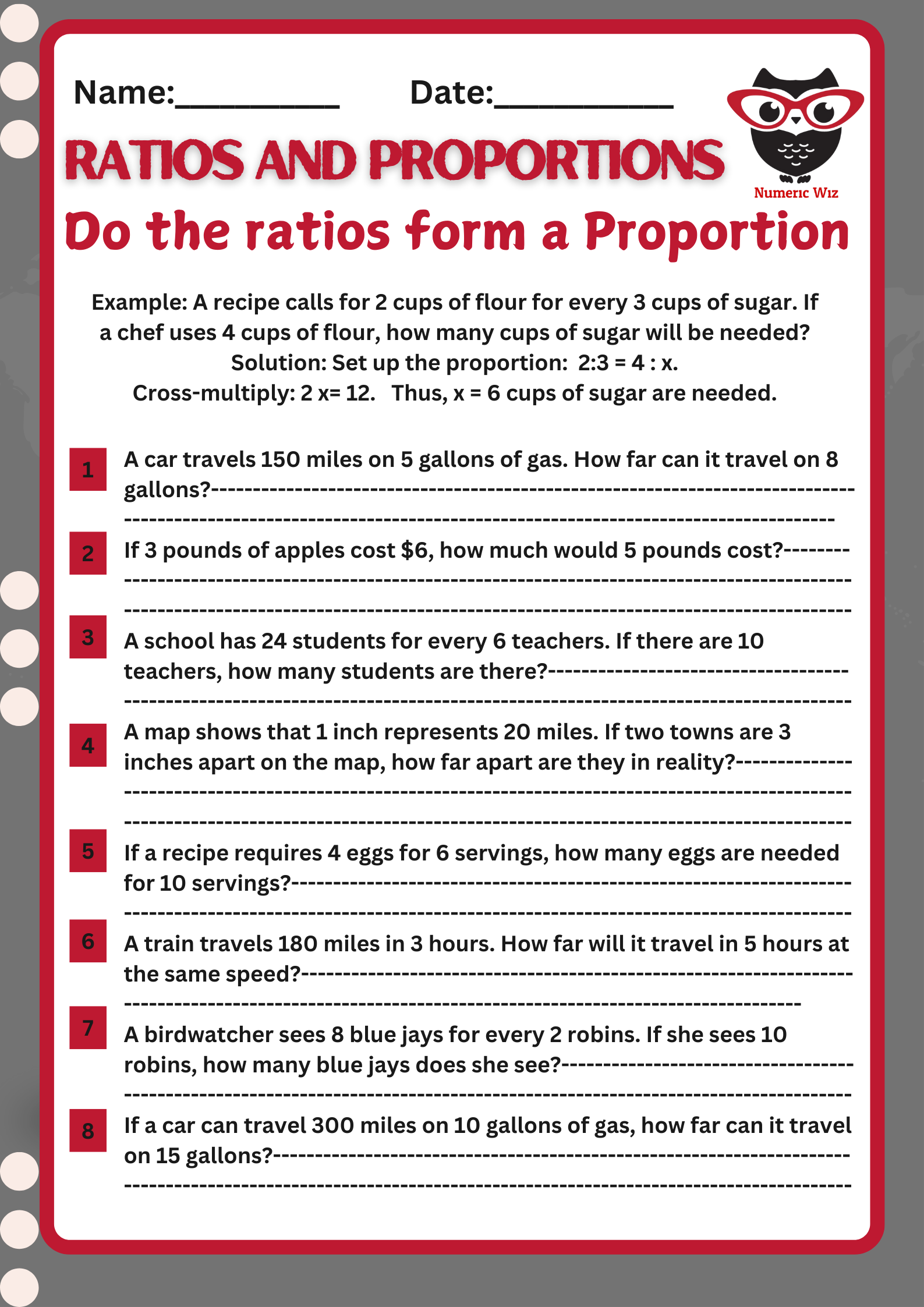
Proportions are everywhere in life! Whether you're scaling a recipe, figuring out the best deal at the store, or converting miles to kilometers, you're using proportional relationships without even realizing it. But how do we know if two ratios actually form a proportion?
A proportion is when two ratios are equal. This means they represent the same relationship, just in different forms.
To decide whether two ratios create a proportion, we can use three simple methods:
 Cross-Multiplication – If the cross-products are equal, the ratios are proportional.
Cross-Multiplication – If the cross-products are equal, the ratios are proportional.
 Simplify Both Ratios – If the two ratios simplify to the same fraction, they form a proportion.
Simplify Both Ratios – If the two ratios simplify to the same fraction, they form a proportion.
 Graph It – If the points form a straight line through the origin, the relationship is proportional.
Graph It – If the points form a straight line through the origin, the relationship is proportional.
A bakery sells 4 cupcakes for $10. Another bakery sells 10 cupcakes for $25. Do these ratios form a proportion?
Step 1: Set Up the Ratios
We compare cupcakes to dollars:
4 cupcakes/10 dollars and 10 cupcakes/25 dollars
Step 2: Use Cross-Multiplication
Multiply across the equal sign:
4×25=10×10
100=100
Since the cross-products are equal, the two ratios form a proportion!
 About Proportions!
About Proportions!If two quantities form a proportion, they will always scale up or down at the same rate.
If graphed, proportional relationships always pass through (0,0) and form a straight line.
Proportions help with unit conversions, recipes, map scaling, and budgeting.
Let’s explore the power of proportions and how they connect to real-life situations!
For a limited time
